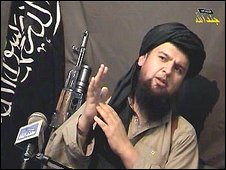 There is a growing threat to national security from foreign forces. Despite common beliefs, however, this threat is not from the West. Actually, since the end of the Cold War, religious extremists in Central Asia have been growing in strength and cooperation. Public intelligence company STRATFOR explains this in its recent report “Militancy in Central Asia: More Than Religious Extremism”, and it has nothing to do with American policy:
There is a growing threat to national security from foreign forces. Despite common beliefs, however, this threat is not from the West. Actually, since the end of the Cold War, religious extremists in Central Asia have been growing in strength and cooperation. Public intelligence company STRATFOR explains this in its recent report “Militancy in Central Asia: More Than Religious Extremism”, and it has nothing to do with American policy:
As Central Asian countries gained independence in the 1990s, religion began to be practiced more openly, and Islamist elements operating on the margins of society were freer to come out accordingly. This created a space in which the Islamist environment grew stronger, just as the ability of the new Central Asian regimes to control and suppress Islamist movements weakened. As a result, some Islamist groups began to call for a regional caliphate governed by Sharia.
Among these groups were the Islamic Movement of Uzbekistan and Hizb al-Tahrir, both of which drew inspiration from the Afghan mujahideen that had fought the Soviet Union from 1979 to 1989. Despite their similarities — they both advocated ousting Uzbek President Islam Karimov — the two groups differed in a fundamental way: Whereas the Islamic Movement of Uzbekistan used violence to further its cause, Hizb al-Tahrir did not. Other groups, such as Akromiya, would later adopt the Islamic Movement of Uzbekistan’s use of violence while espousing Hizb al-Tahrir’s ideology.
Karimov clamped down on these groups in the early to mid-1990s, but the Islamic Movement of Uzbekistan gained refuge in Tajikistan, which was ravaged by civil war from 1992 to 1997. Because of the resultant power vacuum and its long, porous border with Afghanistan, Tajikistan became the primary base of operations for the Islamic Movement of Uzbekistan. In the late 1990s and early 2000s, the group conducted attacks from Tajikistan throughout the Fergana Valley and into southern Kyrgyzstan and Uzbekistan.
This is important to an understanding of the threats to national security our nation currently faces. Remember, Brig. Ali and four other Army officers were convicted for Hizbut Tahrir links just last month. And these ‘links’ were not just subscribing to a newsletter. Brig Ali was actively recruiting military officers to join a conspiracy against Pakistan.
The Islamic Movement of Uzbekistan is also present in Pakistan. In July, an American drone strike killed six Uzbek militants in North Waziristan. Earlier this week, another Uzbek militant leader was killed by a drone strike in Pakistan.
In a message on its Web site, the group, the Islamic Movement of Uzbekistan, said that Uthman Adil, who was its leader for just a year, had died. A senior Pakistani security official confirmed Mr. Adil’s death.
The group’s Web site said that Mr. Adil was killed in April, around the time that an American drone fired missiles into a militant hide-out in Miram Shah, in the North Waziristan tribal region, killing four people. The group may have delayed the announcement of Mr. Adil’s death to first choose a new leader. SITE Intelligence, an organization that monitors jihadist Web sites, said Mr. Adil’s deputy, Uthman Ghazi, had succeeded Mr. Adil.
Actually, the Islamic Movement of Uzbekistan has been using Pakistan as a base of operations for several years. Before Army went into clear militants from South Waziristan in 2009, they faced IMU militants that they had been fighting for years, some even having taken part in the Lal Masjid conspiracy.
The Uzbek contingent is thought to have mixed with the local population to some extent, becoming a permanent fixture of the militant scene in Pakistan’s north-western border areas.
Experts say that the Uzbeks were first targeted by Pakistani security forces in March 2007 when militants started attacking and killing Pakistani soldiers and paramilitary troops.
Since then Tahir Yuldashev’s men have been accused of numerous suicide attacks and of killing hundreds of tribal elders in Pakistan over the years.
His militants carried out attacks on Pakistani forces in the tribal belt and are believed to have taken part in the Red Mosque siege in 2007 in which dozens of people were killed.
The military say that Uzbek militants are a formidable enemy.
Pakistani security forces believe that some of the major bomb attacks in Islamabad are the work of Central Asian militants.
It is true that the nation is facing a foreign threat. However it is not from the widely accepted bogeys of CIA, RAW, MOSSAD but from a growing alliance of religious extremists from countries like Uzbekistan. These militants are by their ideology and their actions anti-Pakistan, and they must be defeated.
![]()






There was no influence of wahabi/salafist dogma in central
asia until the 90s.Then this influence gradually began to increase as they central asians began to meet bin laden’s men and taliban, infact the latter too were influenced by Al Timayya doctrine.Among the four school of thought and jurisprudence, the hanafi is more open minded and Abu Hanifa believed and preached individual is responsible for his religious acts to Allah, and the State for his human acts to the society. The other three schools differed. Unless we stop the Wahabi influence here in Pakistan this threat will increase with time.
Comments are closed.